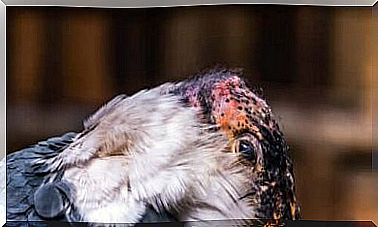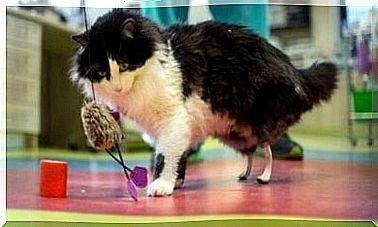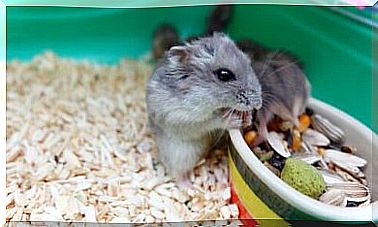The Strange Scarab
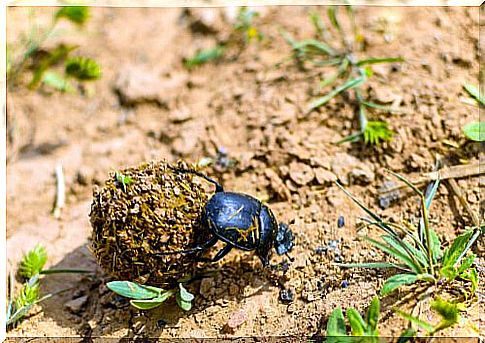
The animal that concerns us today is well known around the world: the beetle. In addition to its name and its surprising ‘carrying’, there are many facts about the animal that we’ll describe in this article. Don’t stop reading if you want to know all its secrets.
What is a beetle?
The term “beetle” refers to a very particular group of insects. They are included in the order Coleoptera , which comprises about 375,000 different species.
The best known Coleoptera with this name belong to the genus Scarabeus (among others), and S. viettei and S. laticollis are its two main representatives.
Morphologically, we are talking about insects that have a medium size and strong legs. The beetle uses its paws both to move around and to stop digging and shaping the dung ball.
Normally, its body is an intense metallic black color, although it can also take on shades of blue, green and even yellow.
It is evident that the most striking feature of this Coleoptera is its coprophagic behavior: this means that they feed on excrement. But this is not the only use they make of excreta.
What do they use the droppings of other animals for?
When they detect the presence of excrement, these animals come flying towards them, forming large swarms.
By coming together in large quantities, they can reduce the large heap produced by a large animal – such as an elephant – to a mat of undigested fibrous material.
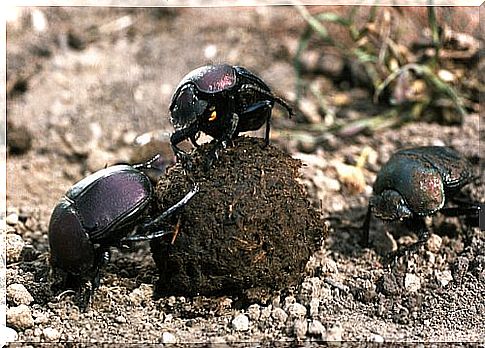
At this point , the beetle rolls a piece of material and begins to mold it into a ball with its front legs. Then he transports her to the gallery he had dug earlier.
The way the ball is transported attracts a lot of attention, as it rests its front legs on the ground and with its hind legs rolls the molded ball to the gallery. Sometimes a second individual collaborates on this transport.
At other times, they dig the gallery just below the manure so they don’t have to carry the ball. That’s why, in some parts of Brazil and the world, it is known as “turf roll”.
Once they have one or several balls stored, they extract the liquid rich in nutrients and micro-organisms and feed on it. But the ball still has an important role in the gestation of larvae.
When they accumulate a sufficient amount of manure, the beetles break this ball into small fragments. The female introduces her ovipositor there and deposits an egg.
These small structures are polished and the manure fermentation provides the larvae with the ideal environment for their development.
When the process of development and metamorphosis ends, they emerge to the surface in their adult form.
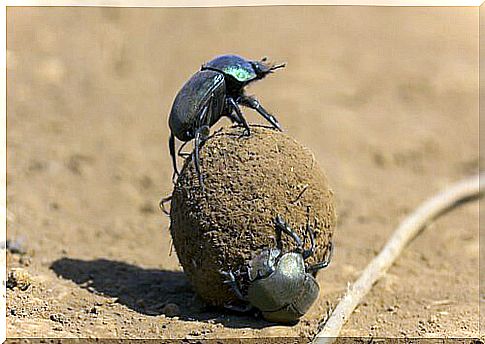
The beetle is guided by the Milky Way
It sounds surprising, but recent research at Lund University in Sweden has confirmed this. To reach the storage gallery, these animals climb to the top of the ball and begin to spin their bodies in all directions.
Using their small eyes, they take like “snapshots” of the position of celestial bodies and stars and store the information in the brain. This allows them to reliably navigate their way to their destination.
Although behavior similar to this is already recognized in other insects, it is the first time that the existence of these memory data as “snapshots” has been demonstrated.
So far, the only insect capable of such a feat is the beetle. An exceptional find, no doubt.
